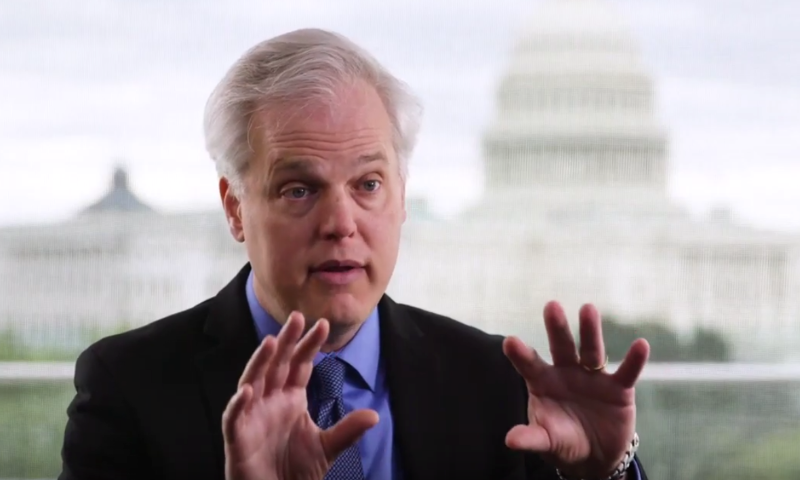David Egts is MuleSoft’s first Public Sector Field CTO, serving as the connective tissue between MuleSoft and top public sector decision-makers and influencers globally. He applies his deep industry knowledge to help ensure current and future government requirements are factored into MuleSoft’s existing products and R&D efforts.
Outside of MuleSoft, David is the founding co-chair of the WashingtonExec CTO Council and advises numerous companies on commercializing open source software and working with the public sector industry. He has received industry-wide recognition as an FCW Federal 100 winner, FedScoop 50 Industry Leadership awardee, and one of WashingtonExec’s Top Cloud Executives to Watch.
Recently, in an exclusive interview with Digital First Magazine, David shared his top priorities for MuleSoft, insights on the biggest hurdle for government organizations when it comes to implementing a successful AI strategy, how the public sector can best equip employees with the skills and knowledge to keep up with the pace of innovation, future plans, and much more. The following excerpts are taken from the interview.
David, can you share with us what you’re focused on this year as the Field CTO, Public Sector, MuleSoft at Salesforce? What are the top priorities for MuleSoft?
AI is top of mind among nearly all business leaders – especially those in the public sector. There is an industry-wide AI adoption process taking place, and the government does not want to be left behind by the private sector. As such, my focus at MuleSoft has been on helping government leaders identify what their AI strategy is and what it should be – but before a good AI strategy can be put into motion, we first have to make sure we’ve laid the foundation with an effective data strategy.
Data fuels AI, and organizations must unlock all of their data sources to create a foundation that’s safe, secure, and trustworthy. A challenge organizations in the public sector face today is that they all have data lakes, but these data lakes aren’t easily accessible or actionable – because they aren’t connected.
MuleSoft’s priority is to help organizations integrate all of these data sources, with the help of Salesforce’s Data Cloud and automation tools. This unifies siloed data and activates it to create a 360-degree view of citizens, residents, and other users of government services that unlocks the full potential of AI for the public sector.

As AI adoption continues to rapidly increase, what are the implications of AI that the public sector needs to be mindful of? How do the implications differ from other industries?
The public sector is still learning about AI and how to best apply it. AI requires its leaders to embrace a level of risk-taking that the industry has not traditionally been comfortable with.
In the public sector, failure is not an option (to quote the great Gene Krantz), and a new culture of low-risk, high-reward risk-taking needs to be adopted. Otherwise, the technology gap between the public and private sectors will continue to widen — and that’s a risk in itself that impacts areas like customer experience and trust.
MuleSoft’s Connectivity Benchmark Report found that 86% of public sector respondents see integration challenges as a roadblock to digital transformation. In the average enterprise, there are over 900 applications used, with only 28% of them integrated — this struggle is even more pronounced in the public sector.
Public sector respondents to MuleSoft’s report are cautiously optimistic about the transformative potential of AI, which may be due to the limited availability of government-certified AI services. However, by embracing proper API management and governance, the public sector can experiment with emerging AI tools using non-sensitive data to lay the groundwork for future integration (eventually using sensitive data) as more AI providers become government-certified.
Why is data privacy and security so fundamental to the public sector, from your perspective?
Trust is the number one value at Salesforce and MuleSoft, and the same goes for the public sector. This means it’s critical for the industry to provide an exceptional customer experience that explicitly builds that trust from the beginning. And now, adding AI to private and public sector systems makes trust-by-design all the more important.
The government can’t do this alone and needs to align itself with companies in the private sector that share its values of trust. Data strategies demand sharing – it’s important that agencies find a balance between the sharing of data with privacy and security. APIs offer a way to provide transparency without releasing personally identifiable information (PII).
AI has the potential to disrupt service delivery in ways that can be beneficial or detrimental. AI-augmented systems can deliver better customer experiences faster and increase trust, but poorly designed AI systems can destroy trust even quicker.
Trust-by-design should be built into IT systems and public services instead of as an afterthought. Customer data should not be a company’s product – Salesforce’s Einstein Trust Layer provides a model for other public and private sector organizations to follow, and hold service providers to the same security guardrails and standards they set for themselves in checking for toxicity, hallucination, bias, masking, and unmasking of data to ensure AI outputs are trustworthy.
What is the biggest hurdle for government organizations when implementing a successful AI strategy? What technologies should IT leaders look to adopt to help overcome it?
For government organizations, the pace of innovation is faster than the pace of regulation. On top of that, the integration of applications remains a hurdle to overcome as the best AI models in the world do organizations no good if they can’t access data to make informed, well-grounded decisions. An effective AI strategy needs to make AI easy for government agencies to use. Otherwise, policies will be circumvented to get work done.
Government agencies need to adopt APIs to better unlock their data for use by AI and other applications, and have the data governance needed to establish guardrails. To do this, agencies should develop what I like to call an ‘AI Autobahn’ that is paved and smooth with wide guardrails so they can move faster using agency-provided and governed tools than going it alone. The guardrails are helpful because they keep everyone on the (approved) road.
Automation will also help bring generative AI to life by triggering workflows to engage customers with AI-generated content that is grounded in real-world customer data that drive desirable outcomes. Using predictive analytics, organizations can forecast what is likely to happen in the future by looking for patterns in the information they already have.
Many state governments are basing their AI strategy on the values of their state constitutions to reflect the norms of their residents. Not only does this give the public sector a baseline AI strategy to work off of, but it also builds trust as guardrails are created based on values that have been long established within each state.
How can the public sector best equip employees with the skills and knowledge to keep up with the pace of innovation? Are there any societal impacts due to innovation that you are watching?
In the public sector, we often talk about modernizing legacy applications, but we sometimes forget about modernizing our workforce. We need to continuously do that to attract and retain the best talent in the public sector. Lifelong learning and growth mindsets must be at the foundation of every agency’s culture, as they have a responsibility to their employees to nurture their growth.
Before, technology education required major investments in time and money to attend universities or product training programs. Today, employees have a wealth of low or no-cost learning available where they can build a customized curriculum based on their personal interests and career aspirations. For example, Salesforce offers Trailhead to empower people to learn in-demand skills and access free, hands-on training to upskill for the future, and other companies offer similar courses. Then there is an abundance of online courses where people can obtain micro-credentials to help advance their careers.
It’s an exciting time that’s empowering people to take ownership of upskilling themselves for the future to keep up with the pace of innovation today. With generative AI, these courses can be augmented to help bring training content to life. This essentially provides a virtual tutor to help better upskill the workforce. Education is critical for employers to attract and retain talent, and now it’s up to the public sector to bring it to life by creating a structure for continuous learning and enablement.
Where do you expect to see the Public Sector in its AI adoption journey one year from now? What can we expect to see from MuleSoft?
As Yogi Berra would say, the future ain’t what it used to be. The coming year in the public sector will be full of significant advancements – and surprises – in AI. We’ll see the development of more powerful AI systems, as well as the widespread adoption of AI in a variety of industries.
Most public sector agencies won’t be building their own models, but they will be leveraging AI built into the products they already own to create centaur teams that pair humans with integration-fueled AI to improve productivity and reduce turnover.
We’ll also see more cloud AI services from the private sector embracing regulated industries, receiving government certifications like FedRAMP, and appearing in regions where data sovereignty is required. This means IT leaders should embrace a loosely coupled API-led approach to AI adoption, as it will let them experiment and develop skills with the latest non-certified services today and quickly move to their certified counterparts tomorrow.
We can expect to see even more transformative applications emerge in the public sector – as soon as this year and in the years to come. In the near term, our focus at MuleSoft will continue to be on bringing data to life through effective integration, automation, and AI in ways that help the public sector harness the pace of innovation.






